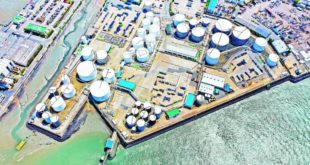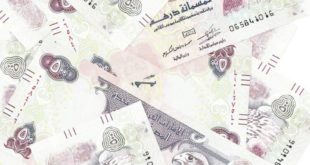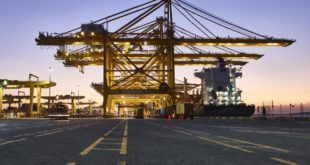Growth in Dubai’s non-oil economy accelerated to an eight-month high in April, the latest PMI data showed as sales and activity rose at faster rates, supported by a stronger decline in prices. The index indicated a strong improvement in business conditions, the strongest since January 2010.
As costs stabilized and supply chains improved, companies continued to increase their inventory and employee numbers at high rates.
The Purchasing Managers Index (PMI) of S&P Global, which monitors the movement of the economy in Dubai, is an index derived from individual diffusion indices that measure changes in production, new orders, employment, supplier delivery times, and stocks of purchased goods.
The study includes the non-oil producing private sector economy in Dubai, with additional sectoral data published for tourism, travel, wholesale and retail, and construction.
The core PMI rose again in April and reached an eight-month high of 56.4, after hitting 55.5 in March.
The index indicated a strong improvement in business conditions in the non-oil economy, the strongest improvement in the history of the series since January 2010. One of the reasons for the rise in the main index was the acceleration of new orders.
The growth rate accelerated rapidly in April and reached an eight-month high, the second-fastest rate since mid-2019.
The best performance for the travel and tourism sector in 8 months
Wholesale and retail sales improved the highest in 6 months
Second fastest increase in new orders in 4 years
About 29% of the companies participating in the study witnessed an expansion since the previous month, compared to only 4% who recorded a decrease. New customers, lower prices and increased market activity all drove sales, according to anecdotal evidence. Among the three sectors covered by the study, the travel and tourism and wholesale and retail sectors led the improvement in sales, as the increases reached their highest levels recorded in eight and six months, respectively.
On the other hand, momentum slowed in the construction sector as new business volume rose only modestly and minimally since last November.
Improved supply chains
Sales growth contributed to a slightly stronger increase in non-oil activity at the start of the second quarter. The rate of expansion accelerated for the fourth month in a row, was the fastest since September 2022 and well above the study average. There were also signs of continued improvement in supply chains. Average lead times for production supplies fell for the fourth month in a row, as companies noted that suppliers were often able to deliver more quickly when requested. In addition to the improvement in demand expectations, this encouraged companies to increase stocks of inputs, although it has slowed since March. The overall rise in stocks of inputs was the second fastest since August 2020.
Increasing the number of workers
Firms also sought to increase employment numbers in April in response to increased production requirements. The rate of job creation slowed from March’s highest level in more than five years, but remained high.
At the same time, firms enjoyed more stability in costs, as average input prices were broadly unchanged since the previous study period. The slight cost increase in the construction sector was mostly offset by reductions in the wholesale and retail and travel and tourism sectors.
This gave companies more space in setting prices, and a number of participating companies reported offering price promotions in the month of April. In fact, the rate of sales price reduction was the fastest in three and a half years.
Corporate confidence
Business confidence towards future activity remained positive, although it declined partially compared to March and reached a four-month low. Many companies looked forward to an improvement in market conditions that would lead to increased activity.
 Media ININ Economy We Trust
Media ININ Economy We Trust








